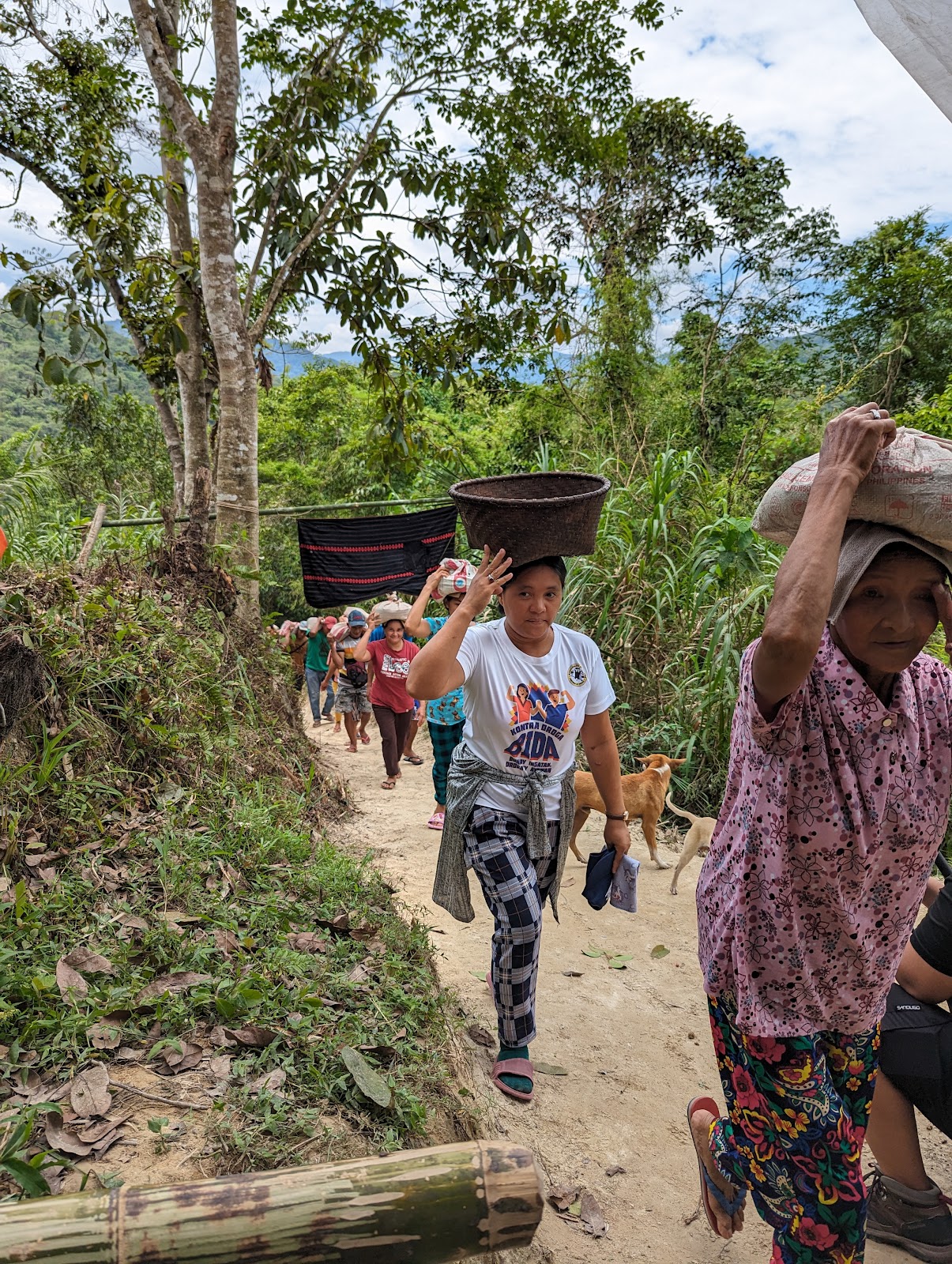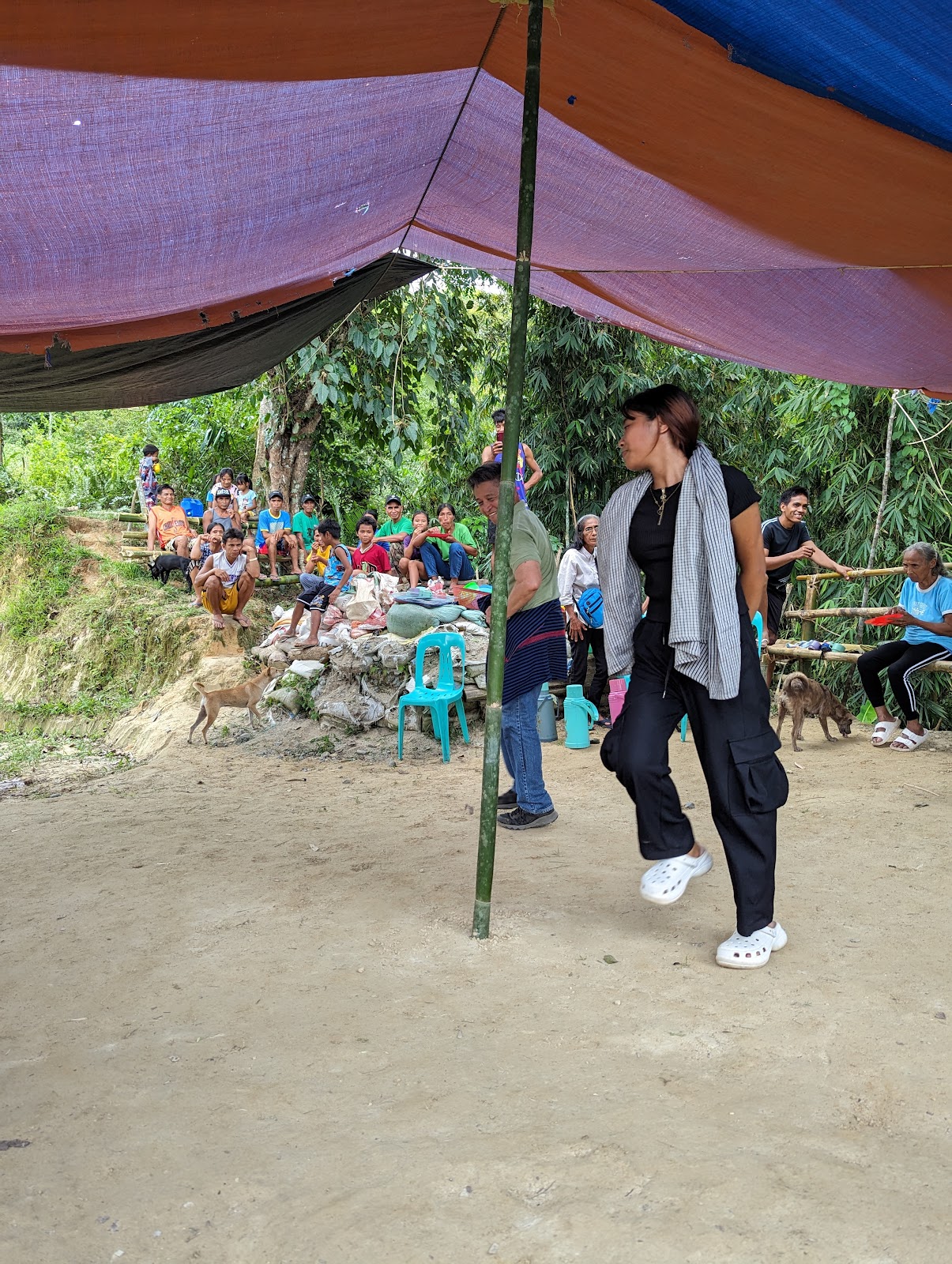 |
| Workers clearing a fallen tree on the road leading to Conner. |
It seemed like we were chasing the tail end of typhoon Aghon, with Google’s flood warnings keeping us a little worried as we covered the 12-hour trip from Manila to Conner Municipality in Apayao province. A fallen tree blocking the road as we passed the town limits briefly delayed us. But it was swiftly cleared by chainsaw-wielding local emergency responders.
My objective for this trip was to be at the groundbreaking of our micro-hydro project in the remote sitio of Lapat, Barangay Nabuangan. SIBAT, our project partner, had a few more destinations in their agenda, but I am happy to just tag along.
 |
| Photo op with the proprietor (in pink) of Gummon Farm and Cabin. |
We spent the night at the Gummon Farm and Cabin, a quaint lodging establishment that also makes and sells its own wine fermented using the tapuey (traditional rice wine unique to the Cordilleras) process.
 |
| Signage announcing the event. |
Our first stop was at Sitio Puriked in Barangay Katablangan, about two hours away from the town proper, where SIBAT had another micro-hydro project going on. From there it was another two hours of travel before we finally got to Sitio Lapat in Barangay Nabuangan.
 |
| The Boboli Creek Watershed. |
It comes to no surprise that Sitio Lapat is named after the lapat system. Their Isneg forebears declared the 500-hectare Boboli Creek Watershed area as lapat after all. Lapat roughly means off-limits, with the weight and nuances associated with tribal warfare and peace pacts. As the village is at the vanguard of the watershed, people have come to call it Lapat also.
 |
| Lapat system signage in Sitio Lapat. |
 |
| Lapat system signage in Sitio Puriked. |
In return for Seacology's assistance, the community will strengthen the conservation of the watershed by emphasizing the watershed’s importance during tribal meetings and other community engagements, affirming that the lifeblood of the promised electricity is the watershed, and that the watershed's conservation is in everyone's interest.
We saw a sign affirming the lapat system while on our way to far-off Sitio Puriked that morning, and it seems to indicate how the advocacy is gaining ground.
 |
| The community dug this two-kilometer canal leading to the site of the powerhouse. |
As part of the municipality’s counterpart, the mayor promised last year to set aside funds for cement bags, for use in the concreting of the two-kilometer canal connecting the water source and the structure housing the turbine. Unfortunately, it was later learned that budget realignment for this purpose will not be allowed under audit rules. But since the municipality had the budget for road development, the menfolk asked the mayor to hire them as laborers so their salaries may be used to buy the cement. I have been told that the 100% of their salaries are being set aside for this purpose.
That canal was begun by the community nearly two years ago, way before any funding was assured. They are still working on it every Saturday. Now they will add to that the construction the powerhouse, forebay, penstock, and other essentials.
 |
| The townsfolk carrying construction materials on their heads. |
At the groundbreaking, as part of the ceremony, the townsfolk demonstrated how they have been transporting supplies to the site. A parade of men and women, young and old, cheerfully bore sacks of construction materials on their heads.
Sitio Lapat is a village steeped in tradition. We were treated to their lively traditional dance called Talip to the music of hand-beaten gongs. The drumbeaters have a way of hitting and sliding their hands over the gongs such that an elongated vibration stops before starting again. My poor attempt to describe it notwithstanding, it felt like the gongs were themselves chanting.
 |
| The traditional Talip dance. |
The Talip is a traditional courtship dance performed by eligible couples. A ceremonial blanket is flapped by the woman, mimicking a bird in flight, as the male partner gives chase. Together, the dancers imitate the movement of flying and gliding birds. As visitors, we were asked to participate as well, regardless of our civil statuses.
I hope to come back to witness the community being served by the new micro-hydro power system.
No comments:
Post a Comment